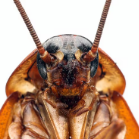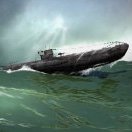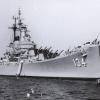-
Posts
3,616 -
Joined
-
Last visited
Profile Information
-
Gender
Male
-
Location
Raleigh, NC - USA
-
Interests
Far too many......and too little time.
Recent Profile Visitors
-
 yvesvidal reacted to a post in a topic:
Type 26 City-Class frigate by NavyShooter - 3D Print - 1/144 - Display
yvesvidal reacted to a post in a topic:
Type 26 City-Class frigate by NavyShooter - 3D Print - 1/144 - Display
-
 yvesvidal reacted to a post in a topic:
U-47 by RVB (Rick) - Amati - Scale 1/72 - Length 92.4cm or 36.38 inches - marketed by Model Shipways c. 2013
yvesvidal reacted to a post in a topic:
U-47 by RVB (Rick) - Amati - Scale 1/72 - Length 92.4cm or 36.38 inches - marketed by Model Shipways c. 2013
-
 yvesvidal reacted to a post in a topic:
SMS Viribus Unitis by Arvaa - Trumpeter - 1/350 - PLASTIC
yvesvidal reacted to a post in a topic:
SMS Viribus Unitis by Arvaa - Trumpeter - 1/350 - PLASTIC
-
 yvesvidal reacted to a post in a topic:
St. Roch by Panteg Models - Billing Boats 605 - 1:72 - RCMP Arctic Patrol Boat
yvesvidal reacted to a post in a topic:
St. Roch by Panteg Models - Billing Boats 605 - 1:72 - RCMP Arctic Patrol Boat
-
 yvesvidal reacted to a post in a topic:
IJN Mikasa by Herby63 - Merit International with Pontos set - 1/200 - PLASTIC
yvesvidal reacted to a post in a topic:
IJN Mikasa by Herby63 - Merit International with Pontos set - 1/200 - PLASTIC
-
 Egilman reacted to a post in a topic:
Starcraft Adjutant AI by yvesvidal - 1/6 - RESIN/PLASTIC
Egilman reacted to a post in a topic:
Starcraft Adjutant AI by yvesvidal - 1/6 - RESIN/PLASTIC
-
 GrandpaPhil reacted to a post in a topic:
Starcraft Adjutant AI by yvesvidal - 1/6 - RESIN/PLASTIC
GrandpaPhil reacted to a post in a topic:
Starcraft Adjutant AI by yvesvidal - 1/6 - RESIN/PLASTIC
-
 Jack12477 reacted to a post in a topic:
Starcraft Adjutant AI by yvesvidal - 1/6 - RESIN/PLASTIC
Jack12477 reacted to a post in a topic:
Starcraft Adjutant AI by yvesvidal - 1/6 - RESIN/PLASTIC
-
 yvesvidal reacted to a post in a topic:
NRG Capstan Project by JacquesCousteau - 1:32
yvesvidal reacted to a post in a topic:
NRG Capstan Project by JacquesCousteau - 1:32
-
 yvesvidal reacted to a post in a topic:
NRG Capstan Project by JacquesCousteau - 1:32
yvesvidal reacted to a post in a topic:
NRG Capstan Project by JacquesCousteau - 1:32
-
 yvesvidal reacted to a post in a topic:
Renault FT-17 on a Renault FP artillery transporter by RGL - FINISHED - Meng/U-Models - PLASTIC/RESIN - diorama
yvesvidal reacted to a post in a topic:
Renault FT-17 on a Renault FP artillery transporter by RGL - FINISHED - Meng/U-Models - PLASTIC/RESIN - diorama
-
Major milestone achieved, yesterday: the permanent gluing of the "robe" on the wooden base: Before this step, I placed some transparent caulking all around the intended pool that will be used to secure and terminate all the pipes and hoses: Hopefully, the caulking will prevent the acrylic resin from leaking. As we all know, the resin by capillarity will find any way out of where it is supposed to stay and polymerize. A few pipes and hoses have been painted and installed: The back and neck are now connected to the "Hangar": The two cables suspending the creature under the arm pits have been installed: I still have a ton of hoses and tubes to integrate. It is not easy..... The painted cables/hoses have been identified and I know where they locate: I hope you are enjoying this dystopian diorama. Yves
-
 Canute reacted to a post in a topic:
Bristol Bulldog by Danstream - FINISHED - Airfix - 1/48 - PLASTIC
Canute reacted to a post in a topic:
Bristol Bulldog by Danstream - FINISHED - Airfix - 1/48 - PLASTIC
-
 egkb reacted to a post in a topic:
HMS Enterprise by Kevin - CAF - 1/48 - August 2020
egkb reacted to a post in a topic:
HMS Enterprise by Kevin - CAF - 1/48 - August 2020
-
 Jack12477 reacted to a post in a topic:
Bristol Bulldog by Danstream - FINISHED - Airfix - 1/48 - PLASTIC
Jack12477 reacted to a post in a topic:
Bristol Bulldog by Danstream - FINISHED - Airfix - 1/48 - PLASTIC
-
 Old Collingwood reacted to a post in a topic:
Bristol Bulldog by Danstream - FINISHED - Airfix - 1/48 - PLASTIC
Old Collingwood reacted to a post in a topic:
Bristol Bulldog by Danstream - FINISHED - Airfix - 1/48 - PLASTIC
-
 Old Collingwood reacted to a post in a topic:
Bristol Bulldog by Danstream - FINISHED - Airfix - 1/48 - PLASTIC
Old Collingwood reacted to a post in a topic:
Bristol Bulldog by Danstream - FINISHED - Airfix - 1/48 - PLASTIC
-
 Roach Boi reacted to a post in a topic:
Marie Jeanne 580 by Roach Boi - Billing Boats - 1:50
Roach Boi reacted to a post in a topic:
Marie Jeanne 580 by Roach Boi - Billing Boats - 1:50
-
 AJohnson reacted to a post in a topic:
Bristol Bulldog by Danstream - FINISHED - Airfix - 1/48 - PLASTIC
AJohnson reacted to a post in a topic:
Bristol Bulldog by Danstream - FINISHED - Airfix - 1/48 - PLASTIC
-
Gorgeous boat, so well done!! I hope you tried it in a tub and are happy with the stability before launching it on a pond. As I have said many times, I love Billing Boats kits for the variety of styles they cover and for the great kits they provide. The Nordkap is such a cute vessel. Yves
- 73 replies
-
- Nordkap
- Billing Boats
-
(and 2 more)
Tagged with:
-
Billing Boats has plenty of beautiful and cute ships. I will be following your Build Log with a lot of interest. Yves
- 1 reply
-
- billing boats
- marie jeanne
-
(and 1 more)
Tagged with:
-
Things have been slow, mostly due to the inclement and cold weather. I can only spray outside and freezing temperature are not the best for paint, as we all know. Anyway, I am building a platform for that crazy structure. Using a plywood base surrounded by pine wood: The base will be lit with six green LEDs. I am trying to create a murky pool at the base of the AI creature, where all pipes, hoses and tubes will end up. A very crude wiring, but it works.... Edges have been painted.... And now, I can start assembling the base of the "Hangar": Yves
-
Kevin, All my condolences for the loss of your life partner. As far as the Enterprise, I think you have made a very nice recovery and actually improved the CAF kit, with the addition of the lower-decks. I really love these CAF kits, showing all the frames and intricacies of the hull for a period ship. It is like building the real prototype. So glad to see you back online, Kevin. Take good care of you. Yves
- 322 replies
-
- enterprise
- caf
-
(and 1 more)
Tagged with:
-
Go for it. It is a nice little kit and will allow you to build a plank of frames hull, exactly like a real ship. Mine is currently stopped, as I am pursuing other projects, but I hope to finish it one day. The scale of 1/32nd is also perfect if you decide to build a diorama around it, with the vast choice of figures and details in either 1/32nd or 1/35th scales. Yves
-
The old Lindberg Bismarck kit had a clever way to elevate the guns while rotating them. Look it up. Yves
-
I am putting together the main components, to make sure that everything fits more or less correctly. First verification that neck and back are fitting to the "Hangar" crane: It seems to click in place, correctly. Then verification that the LEDs are working, after some soldering: The LEDs at the top of the cranium are flickering, showing some intense computing activity. Shoulders are also equipped with LEDs. Below, I will have to paint in black, the inside of the face mask to avoid light leaks. The wires are coming out through the back and are hidden by the various pieces of the armor. They will be invisible, once finished. Finally, a teaser for our audience. Putting everything together without most of the plumbing..... Her sweet derriere.... Aerial view, showing the main cooling hoses to the computer: I hope you are enjoying this crazy project. Yves
-
The neck piece and the head have been glued. I have to go slowly and always check that the assembly of the AI creature fits in the "Hangar". Above, you can see the two anchors to the "Hangar": the large rectangular hole in the middle of the back and the small square opening in the nape of the neck. These two have to fit perfectly. The face mask is held by a small magnet: Et voila. Still plenty of work to be done on the head and back of the head. The wiring has to be centralized as only two conductors will protrude out of the back and be mingled with the plumbing of the robe, into the wooden base. I may have to do a little bit of make-up on the face.... Yves
About us
Modelshipworld - Advancing Ship Modeling through Research
SSL Secured
Your security is important for us so this Website is SSL-Secured
NRG Mailing Address
Nautical Research Guild
237 South Lincoln Street
Westmont IL, 60559-1917
Model Ship World ® and the MSW logo are Registered Trademarks, and belong to the Nautical Research Guild (United States Patent and Trademark Office: No. 6,929,264 & No. 6,929,274, registered Dec. 20, 2022)
Helpful Links
About the NRG
If you enjoy building ship models that are historically accurate as well as beautiful, then The Nautical Research Guild (NRG) is just right for you.
The Guild is a non-profit educational organization whose mission is to “Advance Ship Modeling Through Research”. We provide support to our members in their efforts to raise the quality of their model ships.
The Nautical Research Guild has published our world-renowned quarterly magazine, The Nautical Research Journal, since 1955. The pages of the Journal are full of articles by accomplished ship modelers who show you how they create those exquisite details on their models, and by maritime historians who show you the correct details to build. The Journal is available in both print and digital editions. Go to the NRG web site (www.thenrg.org) to download a complimentary digital copy of the Journal. The NRG also publishes plan sets, books and compilations of back issues of the Journal and the former Ships in Scale and Model Ship Builder magazines.



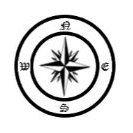
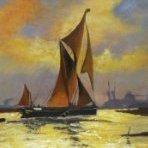
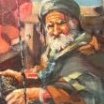
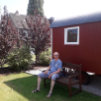

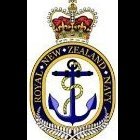
.thumb.jpeg.ee4d205046163acd786c8b7e92026d43.jpeg)
